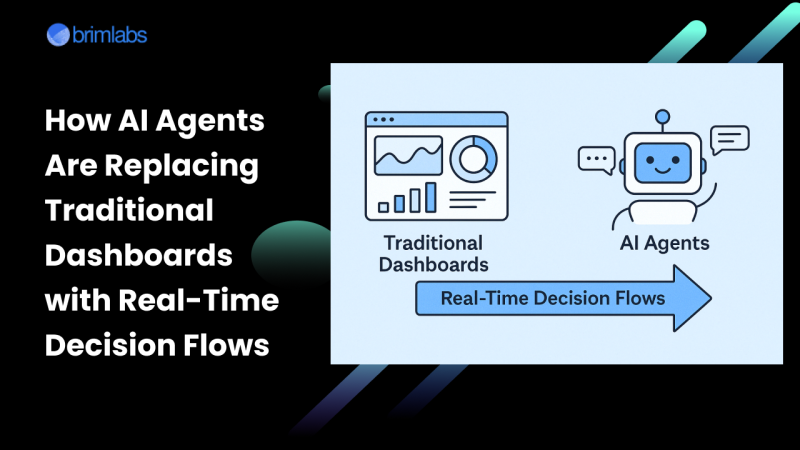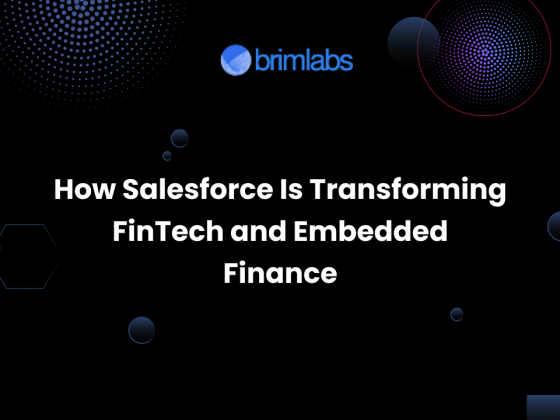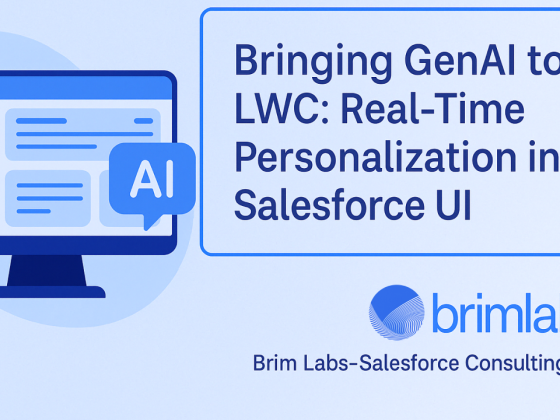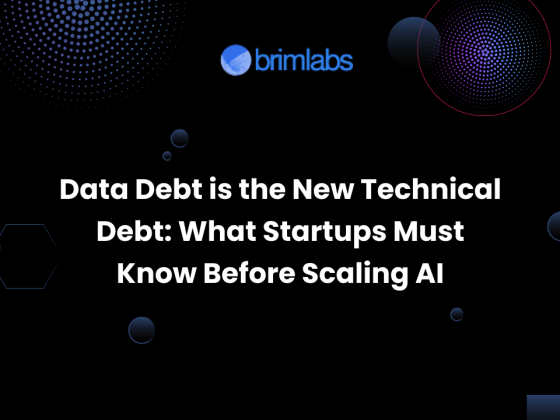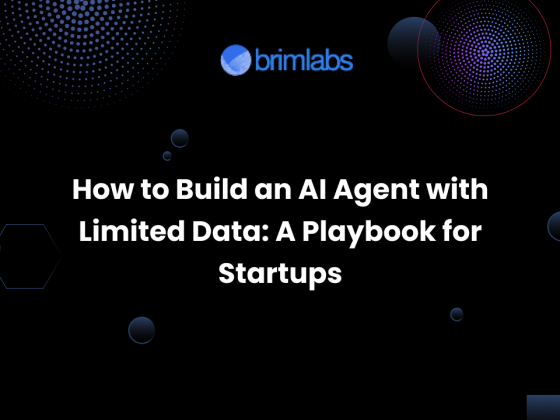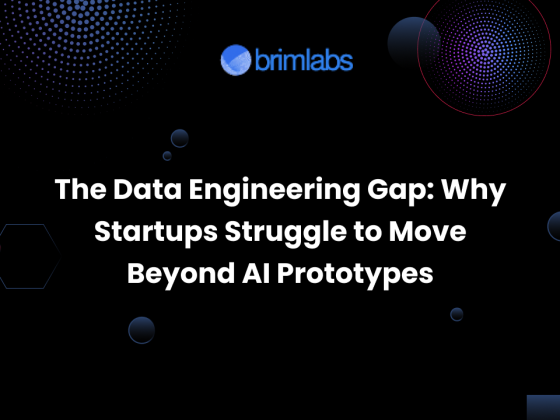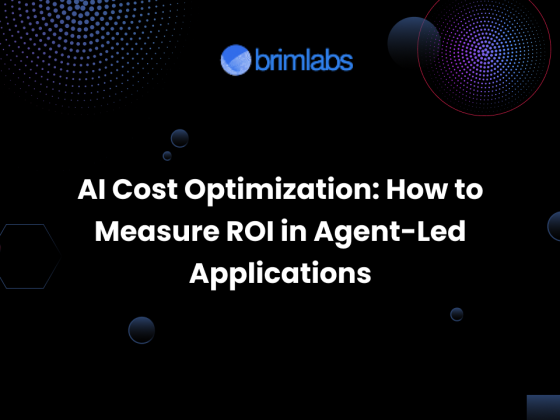In today’s hyper-digital business environment, access to data isn’t the problem, making decisions fast enough is.
Traditionally, dashboards were the go-to medium for consuming data. Business leaders, marketers, product managers, and analysts relied on them to track KPIs, uncover insights, and inform decisions. But dashboards were never truly real-time, nor were they designed to act on data. They were built to visualize, not operate.
Enter AI agents: autonomous, intelligent assistants that not only surface the right data at the right moment, but also make decisions, trigger workflows, and initiate action. They’re replacing traditional dashboards with real-time decision flows, bridging the gap between insight and execution.
Why Traditional Dashboards Fall Short in 2025
Dashboards made a lot of sense in the data revolution era of the 2010s. They consolidated scattered metrics into a single, digestible interface. But as businesses grow more complex and the pace of decisions accelerates, dashboards reveal significant weaknesses:
1. They’re Passive, Not Proactive: Dashboards wait for you to log in and interpret the data. By the time a decision is made, it’s often too late.
2. They Create Analysis Bottlenecks: Everyone looks at the same dashboard, but only trained analysts know what the data actually means. This slows down team autonomy and decision-making.
3. They’re Not Built for Action: Most dashboards don’t let you trigger a marketing campaign, pause a system, or reallocate resources. You must manually connect the dots between insight and action.
4. Context Is Missing: Dashboards show what happened. They don’t tell you why it happened or what to do next.
As a result, dashboards are often reduced to vanity metrics or lagging indicators. The real need? Tools that understand, decide, and act in the flow of business.
What Are AI Agents?
AI agents are intelligent software programs that autonomously observe data, learn patterns, interact through natural language, and take action based on context and rules.
They combine:
- Natural language processing (to understand instructions and deliver explanations)
- Machine learning models (to identify patterns, anomalies, and predictions)
- Rules-based automation (to take specific actions across connected systems)
- Real-time data monitoring (to detect events as they happen)
Rather than serving as passive interfaces, AI agents act like smart colleagues, monitoring systems, surfacing relevant issues, and making decisions (or escalating them) on your behalf.
Key Components of AI Agents in Real-Time Decision Flows
1. Live Data Feeds
AI agents consume real-time data from multiple sources-Salesforce, Google Analytics, Snowflake, PostgreSQL, IoT devices, social media, etc.- through APIs or event streams (Kafka, AWS EventBridge).
2. Context-Aware Decision Logic
Agents don’t just react to thresholds. They understand business logic. For example:
- “Trigger a retention campaign only if churn spikes and product usage drops.”
- “Escalate the issue if this customer has a contract value above $10K.”
3. Autonomous or Semi-Autonomous Action
AI agents can either:
- Notify a human to approve or intervene (semi-autonomous), or
- Automatically execute workflows (fully autonomous), such as:
- Sending personalized emails
- Modifying ad spend
- Pausing a rollout
- Updating CRM records
4. Conversational Interface
Users can talk to these agents via Slack, Microsoft Teams, email, or voice. Instead of navigating dashboards, users can simply ask:
“Why did yesterday’s revenue dip 12%?”
And receive a human-like answer:
“It’s likely due to a 25% drop in organic traffic from Google. Your product listing page ranking fell from position 4 to 10.”
5. Security and Permissions
Enterprise-grade agents respect user permissions, audit trails, and role-based access. They log every action and allow overrides or rollbacks.
Dashboards vs. AI Agents: A Shift from Monitoring to Autonomous Decision-Making
Traditional dashboards and modern AI agents serve the same ultimate goal, supporting better business decisions, but they operate in fundamentally different ways.
Dashboards are static by nature. They aggregate and display data visually, helping users interpret trends and performance metrics. However, they rely heavily on human interpretation and action. You must log in, navigate the interface, identify patterns, and then manually decide what to do. This process introduces delays, demands analytical skill, and often causes missed opportunities, especially in fast-paced environments.
In contrast, AI agents are dynamic and autonomous. They go far beyond simply displaying data, they continuously monitor, analyze, and act on information in real time. Instead of waiting for someone to notice a drop in conversion rates, an AI agent can detect the anomaly, diagnose the cause (say, a broken checkout page), and immediately notify the right team or trigger a workflow to fix it.
Where dashboards require users to pull insights from data, AI agents push contextual decisions directly to the right person or system, often with recommendations or even automated responses already in motion.
Another key difference lies in how users interact with these tools. Dashboards are visual and navigational; AI agents are conversational and proactive. A sales leader might need to spend 10 minutes combing through charts to understand why quarterly numbers are down. With an AI agent, they can simply ask:
“Why is Q2 revenue lower than expected?”
And receive a clear, contextual response, perhaps pointing to a drop in renewals from a specific segment, within seconds.
Ultimately, dashboards help you see what’s happening. AI agents help you respond to what’s happening, instantly, intelligently, and at scale.
Industry Use Cases
Retail & E-Commerce
Problem: High cart abandonment during peak hours
AI Agent: Detects the spike → checks page load time → identifies payment API errors → auto-notifies tech team and suggests a discount pop-up → tracks conversion impact
Result: Faster issue resolution and improved checkout completion rate.
Healthcare
Problem: Surge in ER wait times
AI Agent: Monitors real-time bed availability, staffing schedules, and patient check-ins → reallocates triage nurses dynamically → alerts admin to prioritize low-severity cases for teleconsult
Result: Reduced average wait time by 22%.
B2B SaaS
Problem: Churn spike among mid-tier customers
AI Agent: Tracks NPS scores, usage trends, and support tickets → flags at-risk accounts → auto-assigns CSM follow-up task and recommends tailored upsell
Result: 15% increase in retention and better upsell outcomes.
Logistics & Supply Chain
Problem: Delays due to weather disruptions
AI Agent: Monitors weather alerts → maps affected routes → reroutes deliveries → sends customer notifications and updated ETAs
Result: Reduced late delivery complaints by 35%.
Building AI Agent Infrastructure
The rise of AI agents requires a modern tech stack that includes:
- LLMs (like GPT-4, Claude, or open-source alternatives) for reasoning and communication
- Event streaming platforms (Apache Kafka, AWS EventBridge) for real-time data ingestion
- Agent frameworks (LangChain, AutoGPT, CrewAI) for multi-step reasoning and tool usage
- Low-code automation tools (n8n, Zapier, Airplane.dev) for integrating with business systems
- Observability & Security layers for trust and compliance
Why This Matters
We’re no longer in the world where “data-driven” means waiting for Monday reports. In 2025 and beyond:
- Time-to-decision is a competitive advantage
- Automated insights beat manual analysis
- Speed, context, and actionability define success
AI agents remove friction between what we know and what we do. They transform insights into flows, so teams can stop looking at data and start moving with it.
Final Thoughts: The Future Is Agent-Driven
Dashboards won’t disappear overnight, but they are rapidly becoming the backend data sources, not the user-facing tools. The future of decision-making is agent-first, where humans supervise and guide, but the heavy lifting is done by intelligent systems.
At Brim Labs, We Help You Build the Future
At Brim Labs, we help fast-growing startups and enterprises build AI-powered agents and automation layers tailored to your workflows.
Whether you want to:
- Automate business decisions,
- Build multi-agent architectures,
- Or replace old dashboards with AI-first interfaces.

